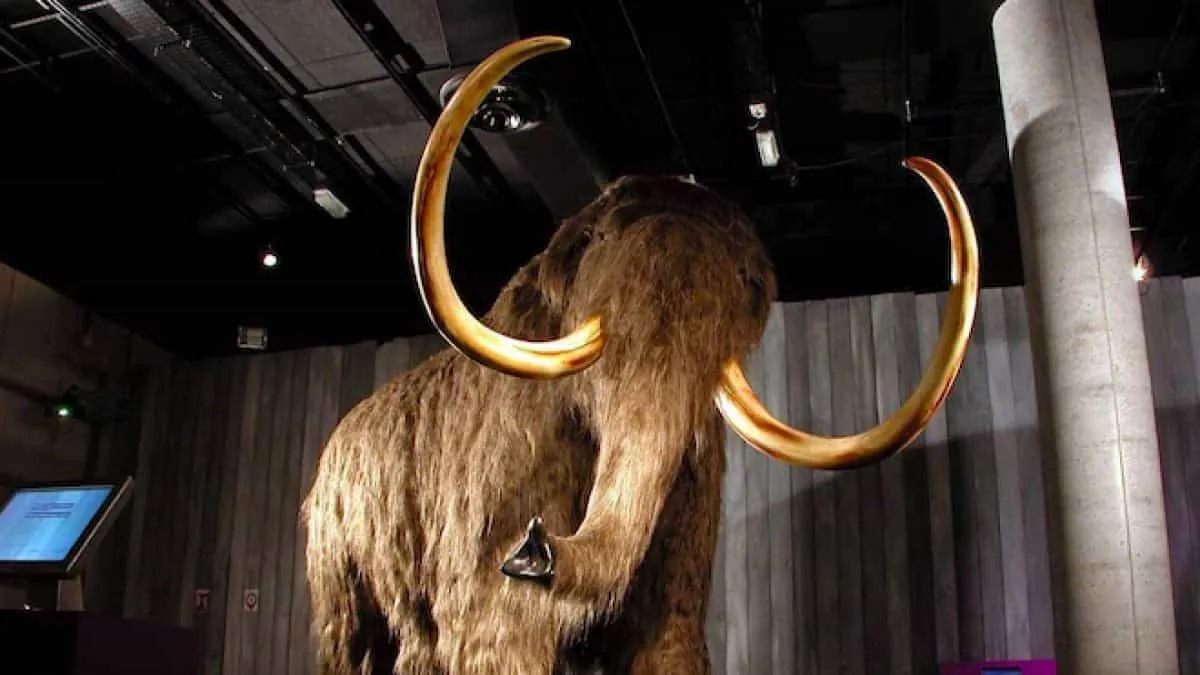
In a groundbreaking scientific endeavor that pushes the boundaries of genetic engineering, researchers have created woolly mice as part of their ambitious goal to resurrect the extinct woolly mammoth. This remarkable achievement marks a significant step in the field of de-extinction science, although the journey toward bringing these ancient giants back to life is complex and filled with challenges.
Scientists at Colossal Biosciences recently published their findings, detailing the creation of a unique species they refer to as “woolly mice.” These extraordinary rodents boast a distinctive golden-brown coat that is triple the volume of typical mouse fur, resulting in a notably fluffy appearance. The genetic modifications primarily targeted genes linked to hair length, texture, and color, aiming to mimic features of the ancient woolly mammoth.
The research team specifically focused on genes believed to aid in cold adaptation mechanisms. By introducing mammoth-like genetic traits into standard laboratory mice, they successfully transformed the animals’ appearance without altering their body mass. This targeted genetic modification showcases how specific changes can lead to dramatic phenotypic transformations.
While these mice appear charming with their luxurious coats, researchers have yet to determine if these modifications genuinely enhance cold resistance. The ability to survive freezing temperatures—an essential adaptation for mammoths during the Ice Age—remains unverified in these experimental rodents. Just as millions of cicadas emerge after 17 years underground, highlighting nature's incredible survival adaptations, these woolly mice represent human endeavors to recreate evolutionary traits.
The decision to use mice for this initial experiment stems from their rapid reproductive cycle and well-documented genetics. This pragmatic approach enables researchers to test genetic modification techniques and observe results more quickly than they could with elephants, whose gestation period is nearly two years.
Rather than technically “resurrecting” the woolly mammoth, scientists aim to create a hybrid species that combines Asian elephant and mammoth DNA. This strategy leverages the remarkable genetic similarity between these species—approximately 99.6% identical genomes—to potentially develop an elephant-mammoth chimera with mammoth-like characteristics.
The project employs induced pluripotent stem cells (iPSCs), which are adult cells reprogrammed to an immature state capable of developing into various tissue types. This innovative technology offers a pathway to integrate mammoth genes into elephant cell lines, potentially creating embryos with mammoth traits. With an ambitious timeline, scientists suggest that the first mammoth-elephant hybrid could emerge by late 2028.
This audacious goal has ignited excitement and ethical debates within the scientific community. Some experts question the morality of resurrecting extinct species, while others highlight the potential ecological benefits of returning mammoth-like creatures to their original habitats, particularly in restoring Arctic grasslands that could help combat climate change. Like Stephen Hawking’s warnings about Earth’s future, some scientists caution that de-extinction projects could divert vital resources away from conserving currently endangered species, arguing that our focus should be on preventing extinctions rather than reversing them.
Despite the creation of woolly mice, many prominent researchers express skepticism about the timeline for the mammoth revival. Robin Lovell-Badge, head of stem cell biology and developmental genetics at London’s Francis Crick Institute, voiced concerns in an interview with The Guardian. He noted that while the fluffy mice appear endearing, their physiological and behavioral characteristics remain largely unknown. The transition from modifying mice to successfully engineering elephant embryos with mammoth traits presents a daunting scientific challenge.
The intricate interplay of thousands of genes that determine an animal’s adaptation to extreme environments cannot be simplified to just a few genetic tweaks. The unexpected results of genetic experiments can sometimes lead to surprising outcomes, much like the astonishment people feel when discovering massive pythons in unusual locations. However, scientific progress necessitates systematic testing rather than relying on chance outcomes.
The complexity of mammalian genetics means that transferring a few mammoth genes into elephants may not yield creatures genuinely adapted to Arctic conditions. The survival of the woolly mammoth in frigid environments likely depended on a plethora of adaptations, including specialized circulatory systems, metabolic processes, and behavioral traits that evolved over millennia.
Critics argue that even if researchers succeed in creating mammoth-elephant hybrids, these animals would likely require intensive human care, similar to how rescued animals need specialized attention after years of neglect. Without mammoth mothers to impart survival skills, these hybrids would lack the cultural knowledge necessary for true wilderness survival.
Despite the skepticism, the woolly mice experiment has invigorated researchers to continue pursuing mammoth de-extinction. This project is just one component of a broader scientific movement exploring how genetic technologies might revive extinct species or create functional equivalents that fulfill similar ecological roles. Beyond woolly mammoths, scientists are considering revival projects for passenger pigeons, thylacines (Tasmanian tigers), and other recently extinct species. Each project presents unique challenges, yet all benefit from rapid advances in genomic technologies.
These efforts often require extraordinary coordination, similar to scenarios where friends rally to rescue dozens of hunting dogs from drowning—both situations involve mobilizing resources for unexpected biological interventions. The creation of woolly mice exemplifies how targeted gene modification can lead to significant phenotypic changes. While this represents merely a small step toward mammoth revival, it provides invaluable insights into how specific genes influence hair development and potentially cold adaptation mechanisms.